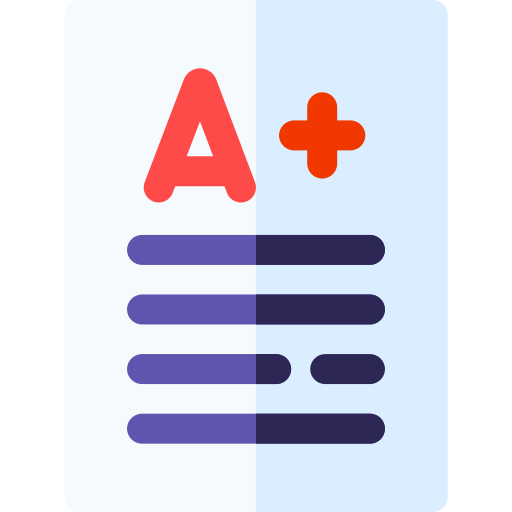كتاب الطالب 2020 2021 دراسات اجتماعية منهج إنجليزي صف حادي عشر فصل ثالث
Lesson 1 Qualitative Analysis
PRE-READING
Data are raw facts while information is processed data. Researchers try to find relationships or patterns that will lead them to make claims or conclusions. In qualitative data analysis, researchers deal with data based on text, images and other types of non-numerical information.
Researchers use qualitative data analysis to find meanings and get a deeper understanding of what the data reveals about the phenomenon being studied. Researchers use quantitative data analysis to confirm, to predict or to explain a phenomenon
The key difference between qualitative and quantitative data analysis is the role of the researcher. In quantitative research numbers are used to objectively understand the phenomenon. In qualitative research, the researcher extracts meaning according to his or her interpretation of the data. This is why qualitative research is called subjective. This heavy involvement of the researcher and subjectivity is one of the criticisms of qualitative research. The strength of qualitative data analysis is determined by the researcher's integrity, knowledge of the phenomenon, ability to stay neutral (unbiased), and ability to analyse data
Activity Concept Check
How many levels of measurements were discussed in step 4? Circle the correct number
Level of Measurement: Nominal data
Nominal data is basic classification data. The simplest level of measurement usually includes names. By itself it does not have any quantitative value and cannot be measured. Instead, these can be grouped together to measure other variables. For example, fathers and mothers, males and females, Rome and Venice, can all make up nominal data. They can be grouped. For example, males and females can be used to measure other variables. One example could be male and female students' scores in an English exam. In this example, the nominal data (male and female) is being used to label other variables, like scores in an English exam. This type of data can be grouped together into categories to analyse each category. For example, the percentage of males in the English class
Level of Measurement: Ordinal data
Ordinal data is data or information in a logical order. For example, very sad, sad, happy, very happy are usually used in scaled questions (I to something), where the difference between values follows a logical order, and used to rank information. But, the difference between them is not necessarily the same. For example, the number of people who said between somewhat satisfied, and satisfied. This type of data is usually presented in tables, charts, bar graphs, etc. Lastly, this type of data is not constant, meaning the values change with the variables. For example, the number of participants that pick different options may change their value, i.e. very sad (3 people), sad (5 people), happy (3 people), very happy (7 people)
Lesson 6 Descriptive Analysis Continued
JADID TRADING L.L.C (CONTINUED)
If we were only looking at one variable, such as whether employees had training or not, then this was would be univariate. If we look at different variables individually, as we have been doing, then this we would also call it univariate descriptive analysis. However, in order to truly find relationships and patterns within the data, we need to look at them together. If we are looking at 2 variables together then this becomes Bivariate. When comparing multiple variables then we call it a multivariate analysis. At this stage of your study, it is easier to think about them as two different types
> Descriptive analysis for each individual variable
> Descriptive analysis for combinations of variables
We have done most of the hard work already in preparing the data and identifying the different variables. At this stage, it is also useful to separate the variables' types into quantitative and categorical. As the name suggests, quantitative variables represent quantities or numerical values. For example weight, size or height. In this case study, we only have access to categorical variables, which are represented in qualities or characteristics. For example, joining date, satisfaction with manager, and such
In the Jadid Trading L.L.C. case study you are trying to work out possible reasons for the poor performance of sales staff in the company. Although you have identified a number of mistakes and drawbacks in the questionnaires and subsequent data set, you still have access to a combination of variables that we can use to find relationships and patterns that might explain the poor performance
Social Studies - Grade Il Term 3
Project Description
In this term, you have completed 3 major exercises that have required the collection and analysis of research. At times, you have also taken steps to present this research in the form of a report. The
end of term project requires you to apply the knowledge you gained from these miniprojects and explore the impact of COVID-19 at the local, national and global level. In small groups of 3 to 5, you will produce a short power point presentation to share your findings. Detailed guidelines are provided below. If your class has completed exercises alongside other subjects, then your teacher may ask you to present this as an integrated project. You research task is to explore the impact of COVID-19 on education and learning at the local, national and global level
Outline the general impact of COVID-19 on education and learning at the local, national and global level
How did your school manage expectations of different stakeholder? For example, students, parents, teacher, owners and the Government
Which values, attitudes and skills were important to manage and Online engage with these stakeholders Education
As global citizens which responsible actions were undertaken by students during the pandemic? Use examples from your school, nationally and globally
If as a global community we were to face a similar situation again. What are some of the best examples at the local, national and global level that would ensure a more peaceful and sustainable world
EXPERIMENTS
Experiments in social science and natural science are not the same. In the natural sciences, we can control the environment and therefore the different variables. For example, if you wanted to see how fast an apple drops from a certain height, you could control the size and weight of the apple, the height and so on. However, in social experiments, where we are often studying human interactions, it is not possible to control different variables. In fact, at times we should not even try to control them because the object is to study the behaviour or the phenomenon in its natural setting
How can you collect and present data from scientific experiments? You have done substantial work on the scientific method already. In this lesson, you will focus on collecting and presenting data from an experiment. As social scientist you still need to have a sound understanding of both these elements. The experiment of on the next page is a science experiment (not a social science). Complete the experiment on the next page, make sure you are prepared as there are time constraints with each step




